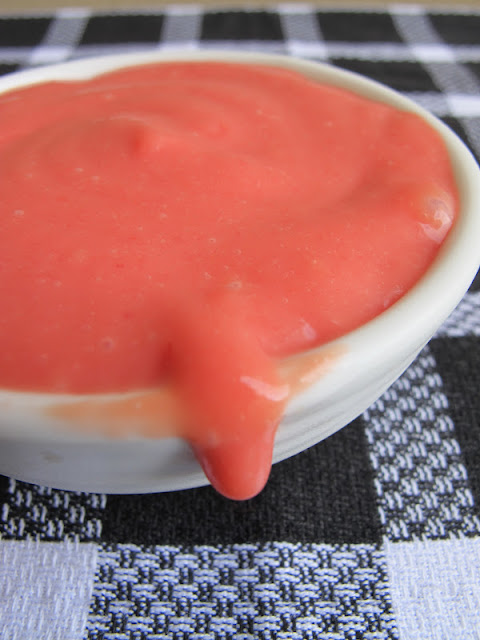from sour to sweet
Australia has a sour history with the prickly pear plant.
The very first settlers, on the First Fleet, brought it with them to establish a cochineal industry (the tiny cochineal grubs that live in the plant are squashed to produce red dye). Since Britain required a lot of red dye for their textile industry (not to mention the Red Coats of their army), they hoped an Australian colony would break the cochineal monopoly held by Spain and Portugal.
Instead, the prickly pear became one of the most invasive weeds ever introduced to Australia.
Last week I wrote about eating the prickly pear cactus paddles, but their fruits are also very popular in Mexico (where it is known as tuna) and southern Italy (where it’s called fico d'India or Indian fig). They are eaten fresh or in drinks, jams, ice creams and salsas.
There are many kinds of fruit as well, ranging from ultra sweet to tart.
The prickly pears I was given by my colleague had vibrant red flesh, so I went for something sweet that exposed the beautiful crimson juices.
Dolloped upon perfect lime-scented meringues, this curd was a rather delectable treat.
Prickly Pear & Lime Curd
Anna’s very own recipe. Makes approx 250ml (1 cup).
Ingredients:
40ml lime juice (2 tablespoons or 1 lime)
60ml prickly pear juice (¼ cup or 1-2 prickly pears)
30g sugar
3 egg yolks
75g butter, chopped into pieces
Method:
1. To peel the prickly pears, use gloves and cut one end off, stick the top with a fork then with a very sharp knife make a cut lengthwise down the fruit to peel the outer layer off. Cut base off then discard peel.
2. Place the fruit in a food processor and puree. Strain through fine mesh using the back of a spoon to push pulp through and separate seeds.
3. Transfer to a heatproof bowl then add egg yolks, sugar and butter. Whisk to combine.
4. Stir continuously over a saucepan of simmering water until mixture has thickened and coats the back of a wooden spoon (3-5 minutes).
5. Remove from heat then set aside to thicken for an hour or two. Cover and store in refrigerator up to three days.
Note: Can also be kept for a month or two in the freezer and defrosted.
So how did it the prickly pear spread across the countryside?
In the mid-1800s, gardeners foolishly planted the cactus in paddocks and parks all along the east coast, mistakenly believing it would make great stock fodder or hedge plants. It flourished in the arid Australia climate and move from garden to paddock where it exploded across the country.
The impact was devastating and it took Special Acts of Parliament in the 1920s for coordinated and serious action to be undertaken. By that time some 60 million acres (25,000,000 hectares) of Queensland and New South Wales were overtaken and 40,000 km2 (15,000 sq mi) of farming land was rendered completely unproductive, with families unable to move between the plants and forced off their land.
The saviour in this story came in the form of the Cactoblastis cactorum, a dusty brown South American moth that, in a case often cited as one of the world’s most successful biological pest control, almost wiped out the Australian infestation of prickly pear.
But what of the cactus today?
From one of the most invasive weeds ever introduced to the country, it’s now on the supermarket shelves next to exotic pitaya, fragrant feijoa and vibrant rambutans. Curious customers are oblivious to its history as a noxious weed.
This is my contribution to Weekend Herb Blogging, hosted this week by Cinzia from Cindystar.






This post was an interesting read! Love the colour of the curd which just proves the point about the dye.
ReplyDeletelove the shot of all the fruit, i am always intrigued :)
ReplyDeleteGorgeous curd! I tried prickly pear recently for the first time, but one of the yellow-green ones - not quite as stunning!
ReplyDelete